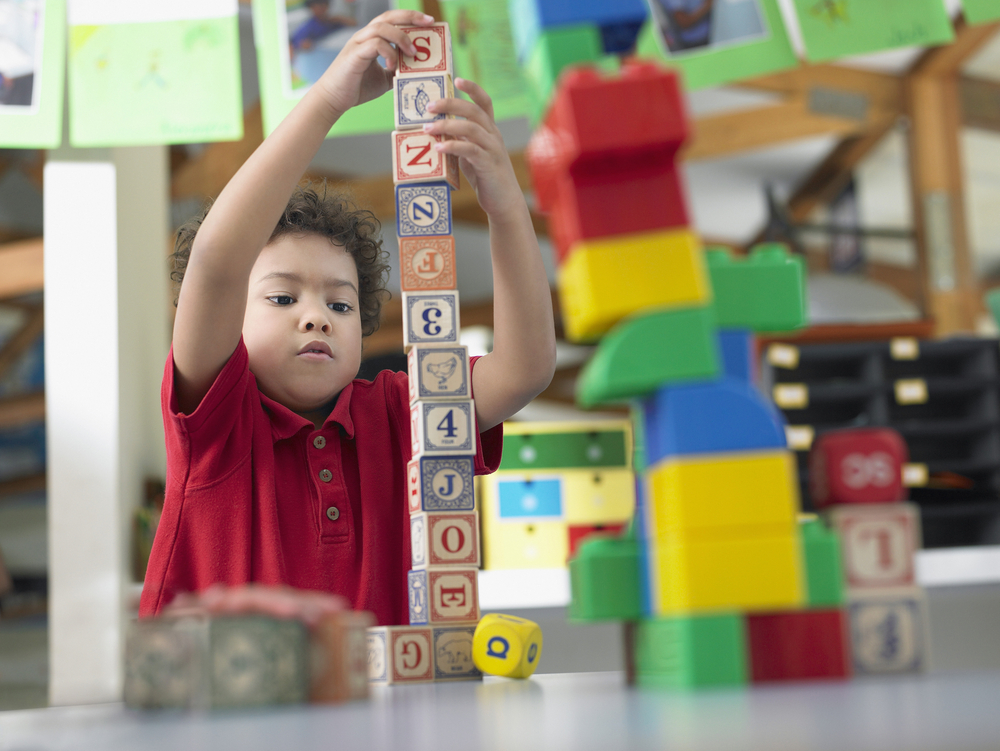Number comparison Normal Math Worksheets for Ages 3-8
5 filtered results
-
From - To
Explore our Number Comparison Normal Math Worksheets designed for children ages 3-8! These engaging resources help young learners develop essential number sense and comparison skills through fun, interactive activities. Each worksheet is tailored to strengthen understanding of greater than, less than, and equal concepts. With colorful illustrations and age-appropriate challenges, our worksheets make learning enjoyable and effective. Ideal for classrooms or home learning, these printable materials aim to boost confidence in early math skills. Help your child excel in math from a young age with our easy-to-use, educational worksheets. Start your math adventure today!
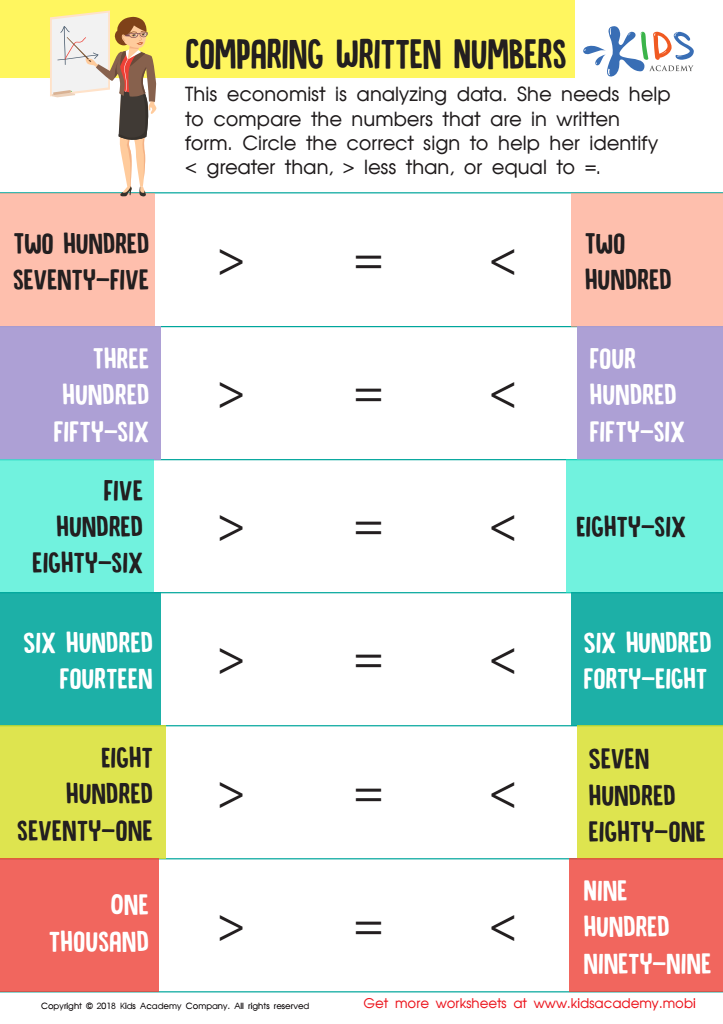

Comparing Written Numbers Worksheet
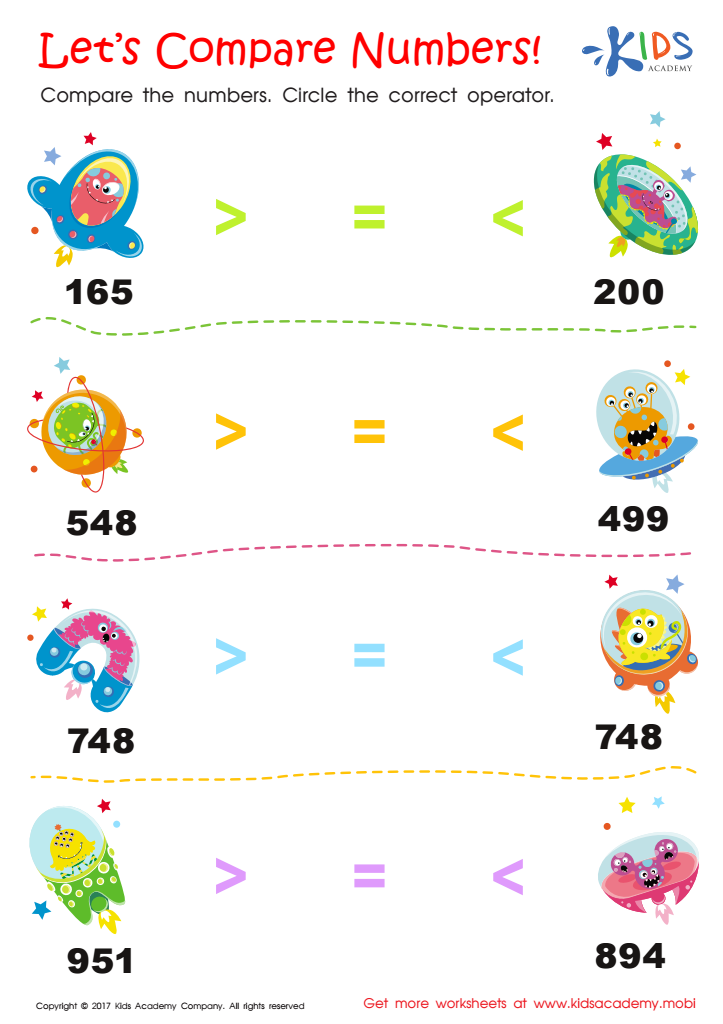

Comparing Numbers Worksheet for 2nd Grade
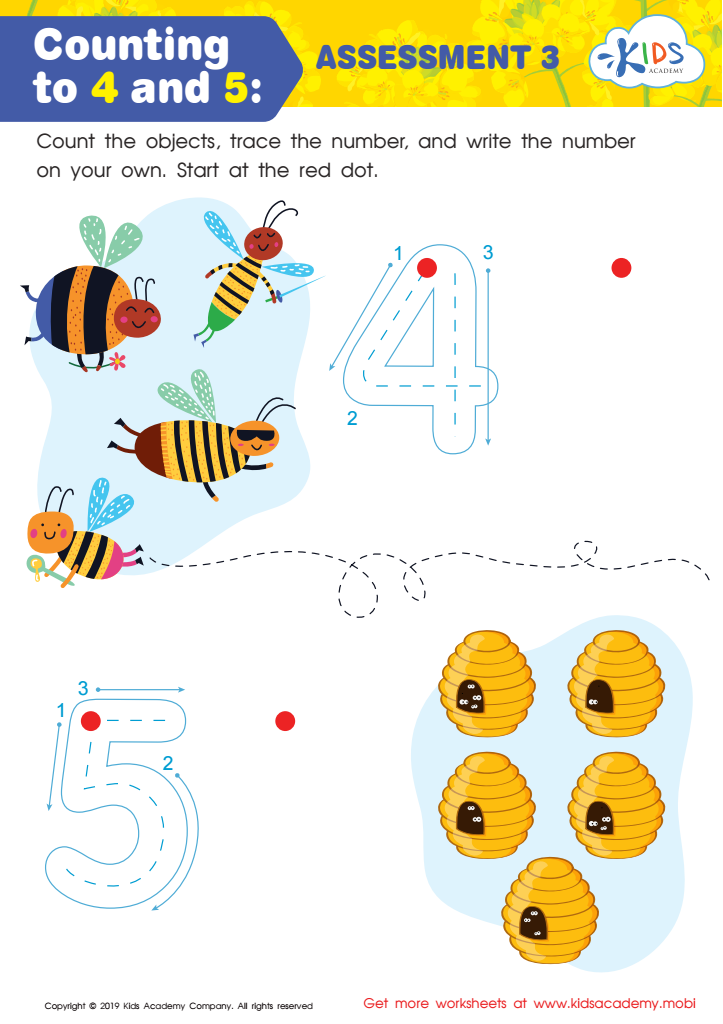

Counting to 4 and 5: Assessment 3 Worksheet
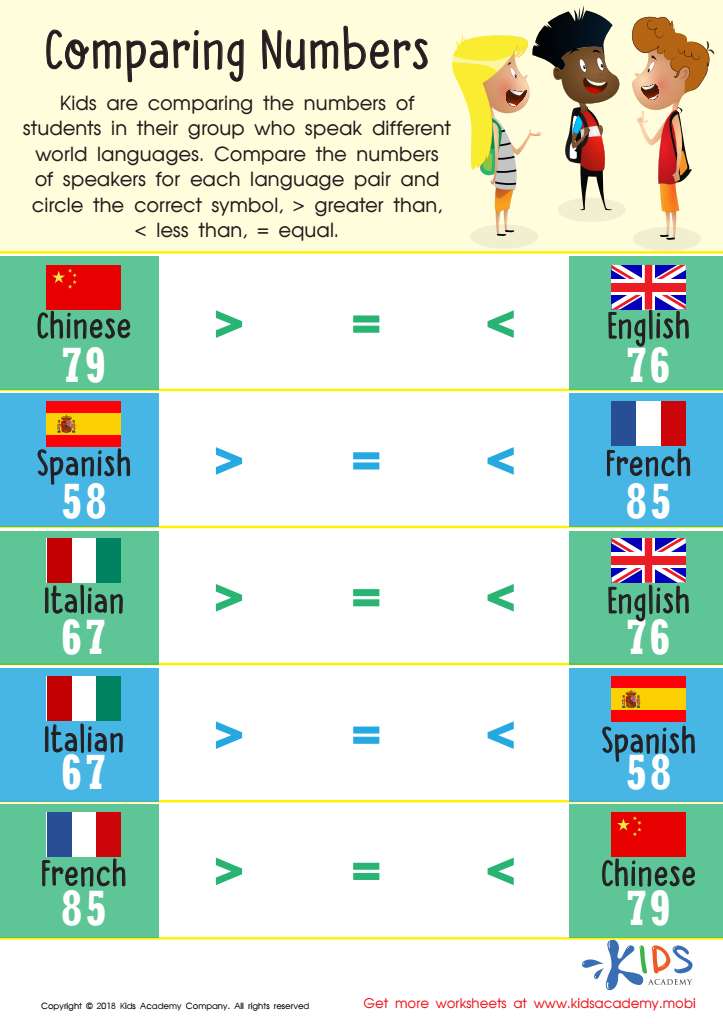

Comparing Numbers Worksheet for 1st Grade
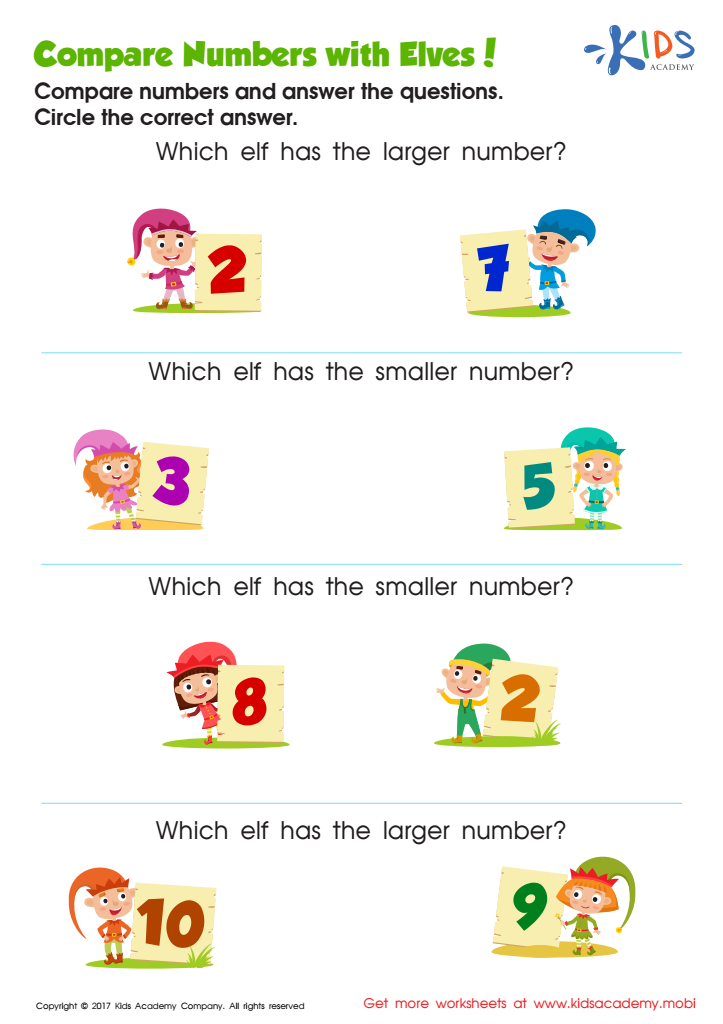

Comparing Numbers Worksheet for Kindergarten
Number comparison is a fundamental mathematical concept that plays a crucial role in a child's cognitive development, particularly for ages 3 to 8. During these formative years, children are naturally curious and eager to explore numbers and their relationships. Understanding how to compare numbers fosters critical thinking and lays the groundwork for more complex mathematical skills down the line.
By engaging young learners in number comparison activities, parents and teachers help children develop essential skills like visual perception, logical reasoning, and problem-solving. These skills not only prepare them for advanced math but also enhance their decision-making abilities in real-life situations. For example, simple practices like comparing quantities in everyday scenarios provide practical math experiences that link abstract concepts to their world.
Moreover, mastering number comparison encourages confidence in math, reducing anxiety as they progress to more challenging concepts. Early intervention and support can help identify and address any difficulties a child may have with numbers, ensuring they build a solid foundation. Ultimately, investing time and effort in teaching number comparison benefits children's overall academic success, fostering a positive attitude towards math that can last a lifetime. These insights highlight why parents and teachers should prioritize this essential skill in early education.
 Assign to My Students
Assign to My Students






